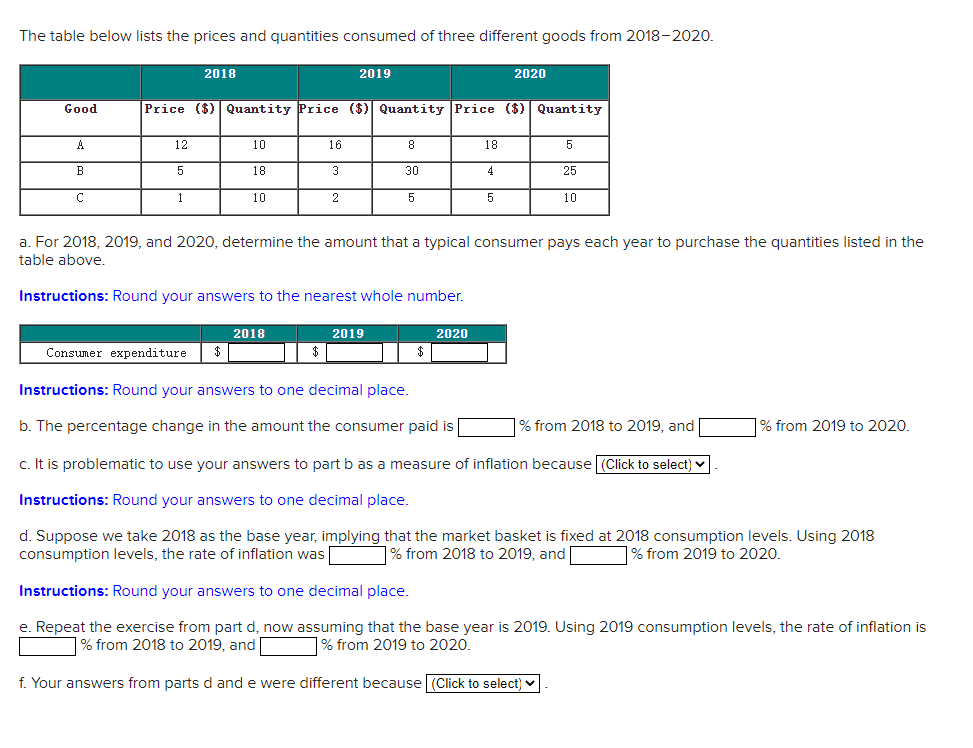a. For 2018, 2019, and 2020, determine the amount that a typical consumer pays each year to purchase the quantities listed in the table above. Instructions: Round your answers to the nearest whole number. 2018 2019 2020 Consumer expenditure $ $ $
a. For 2018, 2019, and 2020, determine the amount that a typical consumer pays each year to purchase the quantities listed in the table above. Instructions: Round your answers to the nearest whole number. 2018 2019 2020 Consumer expenditure $ $ $
Chapter10: Consumer Choice Theory
Section: Chapter Questions
Problem 10P
Related questions
Question

Transcribed Image Text:The table below lists the prices and quantities consumed of three different goods from 2018-2020.
2018
2019
2020
Good
Price ($) Quantity Price ($) Quantity Price ($) Quantity
A
12
10
16
18
5
B
5
18
3
30
4
25
1
10
2
10
a. For 2018, 2019, and 2020, determine the amount that a typical consumer pays each year to purchase the quantities listed in the
table above.
Instructions: Round your answers to the nearest whole number.
2018
2019
2020
Consumer expenditure
$
$
$
Instructions: Round your answers to one decimal place.
b. The percentage change in the amount the consumer paid is
% from 2018 to 2019, and
% from 2019 to 2020.
c. It is problematic to use your answers to part b as a measure
inflation because (Click to select) v
Instructions: Round your answers to one decimal place.
d. Suppose we take 2018 as the base year, implying that the market basket is fixed at 2018 consumption levels. Using 2018
consumption levels, the rate of inflation was|
% from 2018 to 2019, and
% from 2019 to 2020.
Instructions: Round your answers to one decimal place.
e. Repeat the exercise from part d, now assuming that the base year is 2019. Using 2019 consumption levels, the rate of inflation is
|% from 2018 to 2019, and |
% from 2019 to 2020.
f. Your answers from parts d and e were different because (Click to select) v
Expert Solution
This question has been solved!
Explore an expertly crafted, step-by-step solution for a thorough understanding of key concepts.
This is a popular solution!
Trending now
This is a popular solution!
Step by step
Solved in 2 steps with 3 images

Knowledge Booster
Learn more about
Need a deep-dive on the concept behind this application? Look no further. Learn more about this topic, economics and related others by exploring similar questions and additional content below.Recommended textbooks for you

Exploring Economics
Economics
ISBN:
9781544336329
Author:
Robert L. Sexton
Publisher:
SAGE Publications, Inc



Exploring Economics
Economics
ISBN:
9781544336329
Author:
Robert L. Sexton
Publisher:
SAGE Publications, Inc



